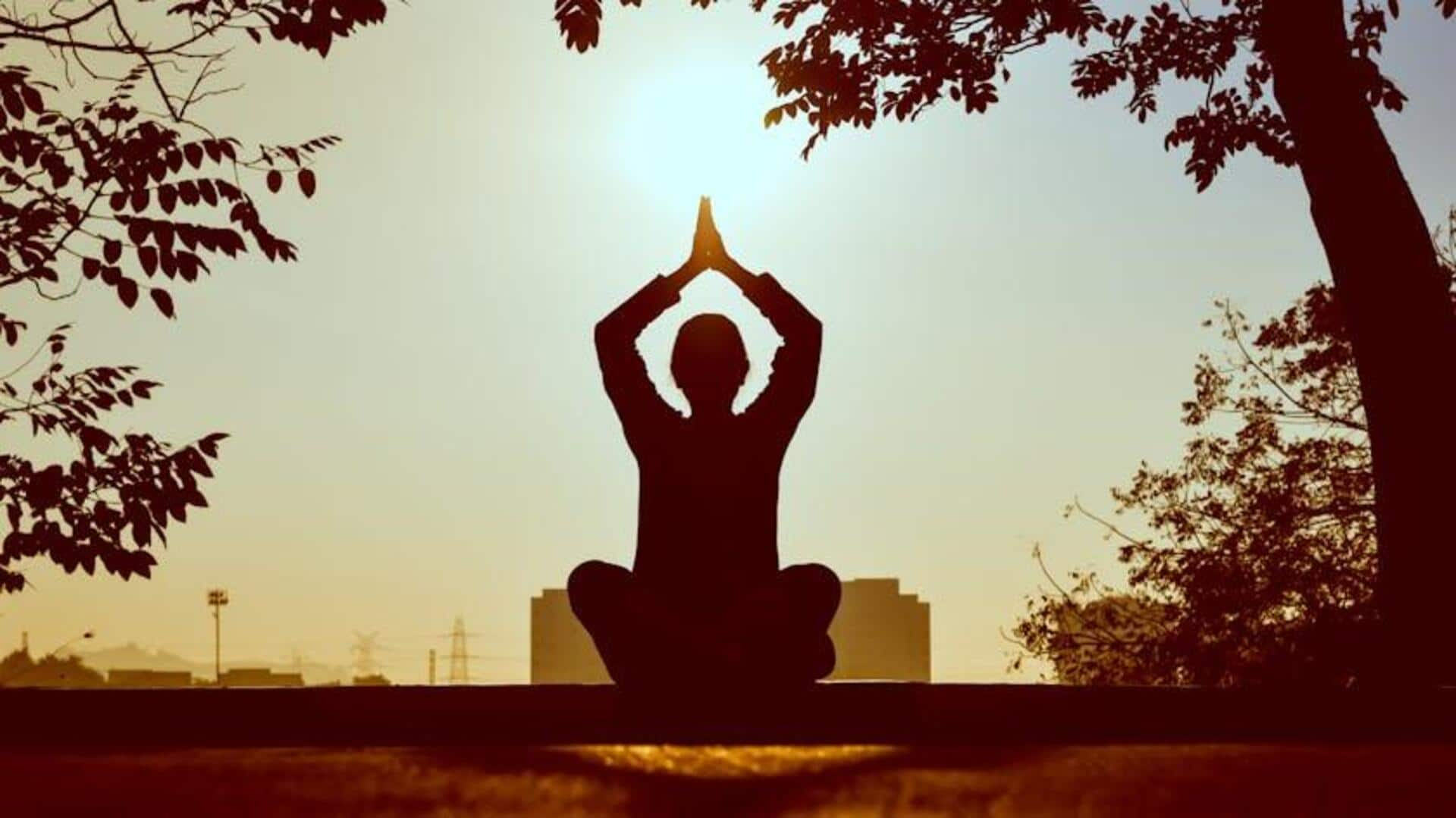
Yoga for beginners: Poses to improve flexibility
What's the story
Yoga brings together physical postures, breathing exercises, and meditation to enhance health and wellness.
For beginners, simple poses help build strength, flexibility, and balance.
They improve your well-being by relieving stress and enhancing your posture.
Integrating these poses into your daily routine can significantly improve your physical and mental health.
Stability
Mountain Pose: Foundation of balance
Mountain Pose is a basic standing pose that aids in enhancing posture and balance.
By standing tall with feet together or slightly apart, arms at the sides or raised overhead, this pose promotes alignment of the spine.
It strengthens the legs and core and promotes awareness of body positioning.
Regular practice of Mountain Pose can enhance stability in other yoga poses, as well as everyday activities.
Flexibility
Downward Dog: Stretching made simple
Downward Dog is a versatile pose that stretches multiple muscle groups at once.
Starting on hands and knees before lifting hips upward creates an inverted V shape with the body.
The position stretches hamstrings, calves, shoulders, and back muscles while also strengthening arms and legs.
Regular practice of Downward Dog increases flexibility over time while providing relief from tension in key areas like shoulders or lower back.
Relaxation
Child's Pose: Restorative relaxation
Child's Pose provides a gentle relaxation by letting you rest comfortably on your knees with forehead resting on the ground or mat surface beneath, if possible; arms stretched forward or beside the torso, depending upon how much preference level you want to have during the practice session itself.
This soothing position releases tension from the whole body, especially after more intense sequences have been completed earlier within the same session timeframe.
Empowerment
Warrior I: Building strength & confidence
Warrior I is a fierce standing pose that strengthens the legs and opens the chest with deep lunges.
One foot is placed forward, knee bent above the ankle, while the opposite leg extends back. This way, you maintain a straight line from heel to head.
Regular practice boosts confidence because of its empowering stance.